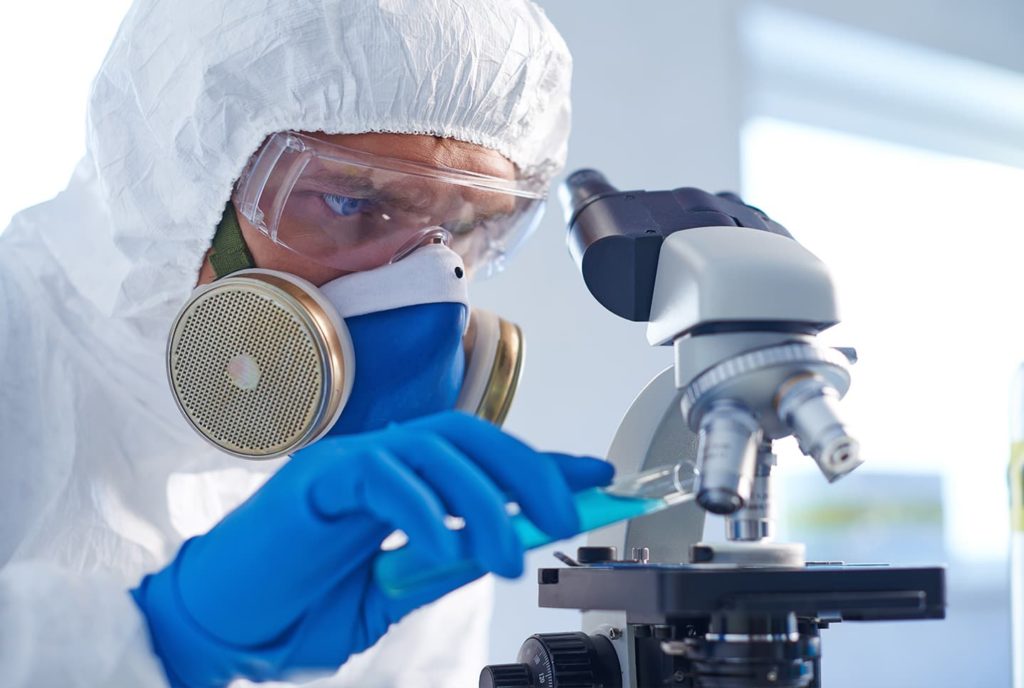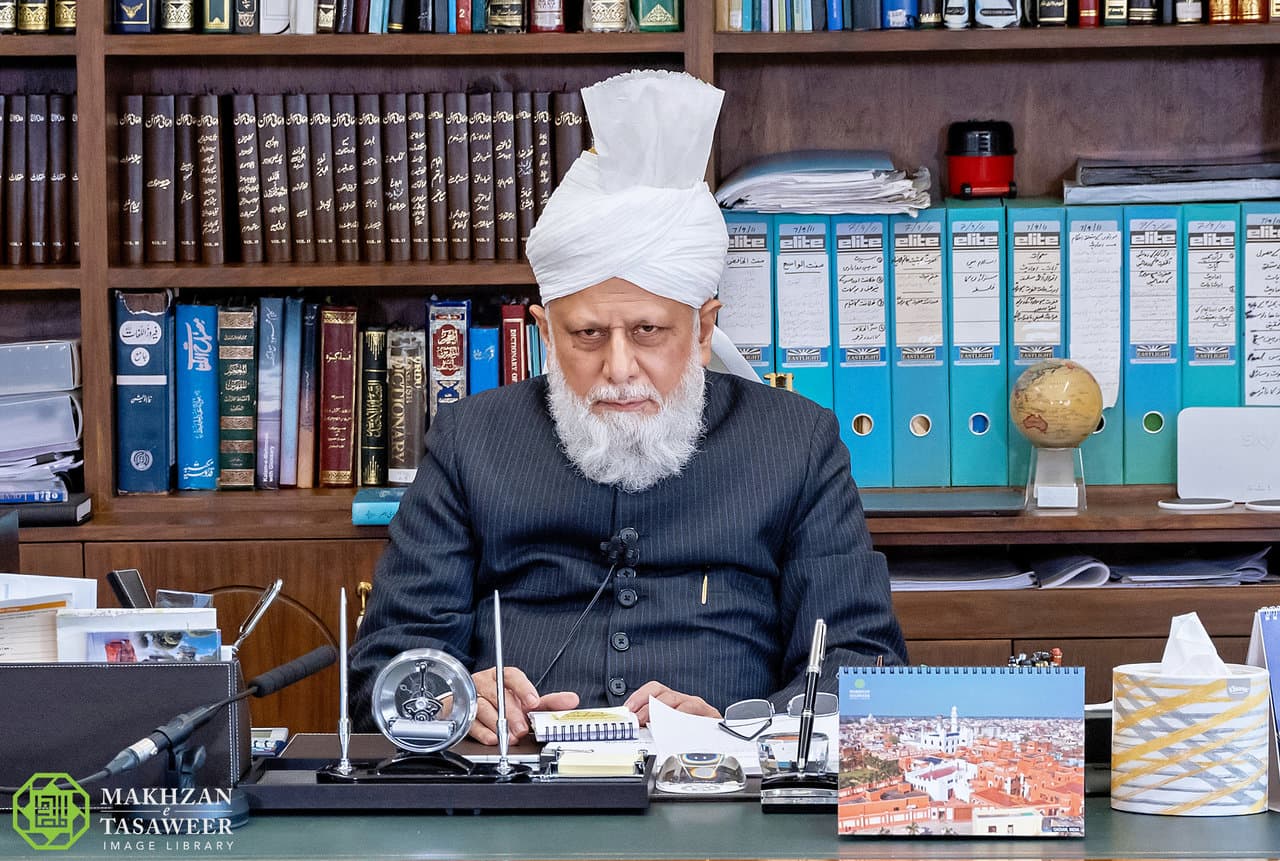
COVID -19: In search of a Cure
By Nusrat Sharif, PhD
Nusrat Sharif, PhD is currently working as Senior Principal Scientist in Inflammation & Immunology Research Unit at Pfizer Inc, Cambridge, MA. She is serving as President of Ahmadi Women Scientists Association USA.
What began as a viral pneumonia with an unusual outbreak in the city of Wuhan, China in December 2019 has now rippled into a global pandemic of shocking proportions. Coronavirus disease 2019 (COVID-19) is a disease caused by severe acute respiratory syndrome coronavirus 2 (SARS-CoV-2) and its rapid spread has transcended into an unforeseeable calamity, upending the lives of billions of people worldwide, devastating economies, afflicting young and old, rich and poor, of every race, in almost every continent.
There are hundreds of coronaviruses, most of which circulate among animals including pigs, camels, bats and cats. Sometimes those viruses jump to humans – called a spillover event – and can cause disease. COVID-19 is thought to have originated in bats.
What happens when a person is infected with novel coronavirus COVID-19?
At the most basic level, the coronavirus like all other viruses, is just a piece of genetic information (single strand RNA genome) that enters a cell and hijacks its machinery, so that the cell now starts producing viral genetic material instead of its own.
The SARS-Cov-2 uses the ACE-2 (Angiotensin Converting Enzyme-2), a protein receptor on the cell membrane to latch on to human cells. ACE-2 reduces blood pressure and inflammation but it also acts like a “door” to the cell, allowing the virus to enter the lungs.
Not all exposures lead to infection. If an infection occurs, it means that the virus has identified the type of cell it needs to establish an infection. Once it enters a cell, the virus replicates very quickly, kills the cells and then spreads. COVID-19 makes people sick in two ways: initially, people get fever and cough and other symptoms of the upper respiratory tract. Once SARS-CoV-2 gets inside the upper respiratory tract, it’s thought to infect and multiply in cells lining the airway, causing damage that kicks the immune system into action. In most people, it should trigger a wave of local inflammation, recruiting immune cells in the vicinity to eradicate the pathogen. The immune response then recedes, and patients recover. In a subset of patients, (15-20% of population) however, the immune system can overreact and cause severe inflammation in the lungs and other organs, making it life threatening.
Why is COVID-19 life threatening in a subset of patients?
Whether a coronavirus infection takes a turn for the worse depends on a person’s immune response. For reasons that are not entirely clear, some individuals, particularly the elderly and sick may have dysfunctional immune systems that fail to keep the SARS-CoV-2 response in check. This could cause an uncontrolled immune response, triggering an overproduction of pathogenic immune cells and their signaling molecules and leading to a cytokine storm. The “cytokine storm” which begins in the lungs, will trigger a violent attack by the immune system to the body, and cause ARDS (Acute Respiratory Distress Syndrome), multiple organ failure, and finally lead to death. In severe cases of SARS-CoV-2 infection, ARDS is the cause of patients having severe shortness of breath, and such patients are put on ventilators as they are unable to breathe on their own, thus also putting them at an increased mortality risk with COVID-19.
An urgent need for effective COVID-19 treatment
There is no clinically proven treatment for COVID-19 currently. Scientists around the globe are working hard to develop effective treatments. The gold standard for halting infectious diseases remains vaccines, which can prevent healthy people from getting infected in the first place. However, the development of a safe, efficacious vaccine takes many years and is an expensive process, as it involves multiple clinical phase trials in human to determine safety and efficacy prior to approval by the FDA (Food and Drug Administration).
Although in the case of a pandemic outbreak, the engineering of vaccines has an accelerated path for development and large-scale manufacture, the minimum time period required to make a safe, effective vaccine still remains several months to a year. Currently, among SARS-CoV-2 vaccine technologies, vaccines composing of RNA represent faster, more potent, and increased safety in administration, as compared to traditional vaccines. Unlike a normal vaccine, RNA vaccines work by introducing an mRNA sequence, which directs the synthesis of proteins. The mRNA in the vaccine codes for specific viral proteins, and once these proteins are deliberately built in the body, the immune system is able to recognize them, mount a response, and gain a significant advantage in overcoming the war between the virus and the body.
Presently, mRNA-1273 is the first RNA vaccine candidate against SARS-CoV-2, that is being tested for safety and immunogenicity, which is the ability to induce an immune response in healthy human volunteers. It would still take a year for the vaccine to be commercially available.
Repurposing drugs that are designed to treat other conditions could be a near term hope for Covid-19 patients
In an urgent need to save patient’s lives and to attenuate the symptoms of COVID-19, which become life-threatening, researchers are hunting for existing drugs that could be quickly repurposed to fight the infectious respiratory disease. These include drugs that have been used to treat malaria and autoimmune diseases, anti-viral drugs that are developed for other viruses, and antibodies from people who have recovered from COVID-19.
Drugs that are repurposed are chloroquine and hydroxychloroquine products which have been approved by FDA. Both medications have been successfully used to treat inflammatory diseases such as Rheumatoid Arthritis and Lupus. However, both medications can also cause severe side effects if not administered properly. Anti-viral drugs that are available (used for treatment of Ebola) are put in nationwide clinical trials to determine whether they can be administered to COVID-19 patients.
Individuals who recover from COVID-19, contain antibodies against SARS-CoV-2 in their blood. A remarkable feat of the immune system that enables us to fight flu and other infections, these antibodies are produced that bind specifically to the virus, and help immune cells eliminate it from the body. These antibodies can be transferred to severe COVID-19 patients by plasma, a component found in blood. The donor antibodies are anticipated to help the patient overcome the illness and help recovery. This approach seems promising in the near future and is currently being performed in Mount Sinai Hospital, New York in an effort to treat patients suffering from severe life threatening COVID-19 complications.
In today’s modern era of scientific advancement and progress, researchers are still racing to find a cure for COVID-19. However, as Muslims were taught 1400 years ago by the Holy Prophet Muhammad (saw) our ultimate healing and cure comes from the One God, our Creator, As-Shaffee (the Healer), who is Allah the Almighty. The healing for the pandemic illness of today is no different, and one should remain steadfast on this conviction, exercising calm and patience in every kind of misery, be it physical or mental, for this is the standard of Islamic faith.
Allah the Almighty draws our attention to such a personal relationship between the Creator and the creation in the following verse of the Holy Qur’an:
“And when I am ill, it is He who cures me” (Holy Quran, 26:80)
This verse directs every believer that it is Almighty Allah that will heal all sorts of ailments.
Our beloved Master Holy Prophet (saw) encouraged people to seek medical intervention, alongside relying on the power of prayer. The Holy Prophet(saw) “Every disease has a cure. If a cure is applied to the disease, it is relieved by the permission of Allah.” (Sahih Muslim)

